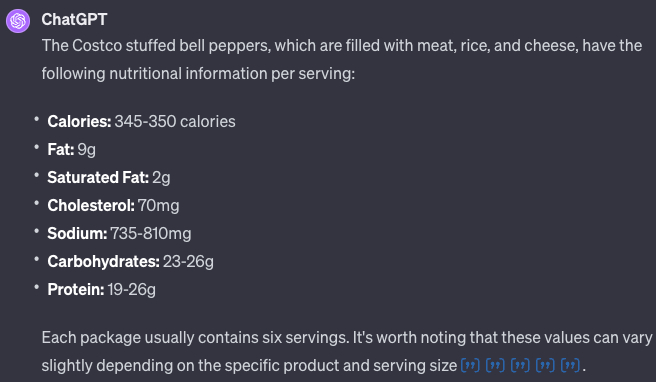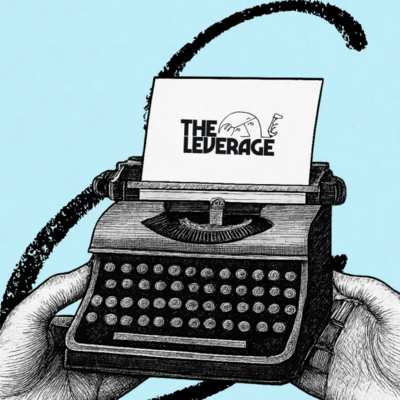
TL;DR:
- We built a GPT bot that we think can solve a significant problem for founders. It’s called Founder’s Friend, it’s free for all ChatGPT subscribers, and it’s available here.
- Founder’s Friend is a voice-first chatbot that provides a safe space for founders to have conversations they can’t have with employees, investors, or friends.
- If you tried ChatGPT or other AI tools and didn’t find them useful, you should try again. There are small hacks you can do to improve your output by 50 percent.
- They include emotional cajoling, prompt construction, and a slight shift in your thinking. In this article, I explore these tips in depth.
X is littered with creators posting flashy demos that, when actually used, are terrible products. I hate these people. Tech attracts a special kind of grifter who uses hyperbole to line their own pockets, and the world is a worse place for their existence.
So, with my distaste for these individuals in mind, please take what I am about to say seriously:
Now—right now—AI has both the capability and ubiquity to significantly improve your productivity by more than 20%. We have crossed the product Rubicon. AI technology is no longer those demos that don’t hold up; it’s been incorporated into genuinely useful products like ChatGPT, made possible by a combination of model improvement and product development.
At Every, we have published many, many, many experiments and products we have built. However, we are pros! This stuff is now at your grandma-should-try-levels of usability.
Over the last two months, AI tools have given me the largest increase in both personal and professional output that I have had in years. I work faster. I write more efficiently. I spend far less time on dumb tasks like simple analysis or Google queries that used to consume my day.
These changes weren’t necessarily intuitive, and they required a paradigm shift in how I approached intellectual labor. But if you sincerely try for a week or two, I think you’ll be stunned by how much more you can get done. Today I want to show you how.
When I’ve expressed this to others, they've usually responded with some doubt. While this skepticism is understandable—after all, startups have been making exaggerated claims since GPT4 was released—it is no longer warranted. I feel like an ancient caveman who has discovered fire, trying to give people medium-rare filet mignon when they would rather stick to the all-raw dinosaur meat diet. So, today I offer you the flame-grilled technology tasting menu. In this piece I focus on ChatGPT, but these improvements are applicable across most AI tools.
Low-leverage thought
Let’s say that every day I have 100 thoughts. Some of these will be routine (but important), such as, “My puppy is the cutest dog in the world.” These might be 20% of my intellectual labor for the day.
Other thoughts will be big, important ideas I can publish in this newsletter—insights on the world, or tech, or finance. These might only be 5% of my thinking, but because of the magic of internet newsletter distribution, this 5% pays my bills.
But the least useful thoughts—the ones that eat up the remaining 75% of my intellectual labor—are the daily thoughts that are helpful but not differentiated.
These are questions like, “How many grams of protein are in my dinner tonight?” Now, I could do the labor of weighing the food and looking up the macronutrients myself. Or, I could take a picture of my stuffed bell pepper, tell ChatGPT it was from Costco, and let the AI take it from there. Which is what I did for my dinner on Monday.
The Only Subscription
You Need to
Stay at the
Edge of AI
The essential toolkit for those shaping the future
"This might be the best value you
can get from an AI subscription."
- Jay S.
Join 100,000+ leaders, builders, and innovators

Email address
Already have an account? Sign in
What is included in a subscription?
Daily insights from AI pioneers + early access to powerful AI tools











Comments
Don't have an account? Sign up!
An awesome post as usual, Evan. I am a founder and solopreneur, am starting to create GPTs to use in my consulting work, and thinking about the best ways to provide guidance for clients on how to use them. Your insights are spot on and I'll definitely try out Founders Friend. Thanks again!
@rob.silas Thanks Rob! appreciate it. LMK how Founder's Friend works for ya
Evan, thank you for writing such an informative and engaging article on AI. I’m a 63-year-old Medical Lab Scientist who doesn’t work in the tech field, but I’m fascinated by the potential and impact of AI on our lives. Your article hooked me because you used relevant resources and examples to show how AI can be applied to both personal and professional situations.
One of the things that I liked about your article is that you discussed conversational AI, which is something that I often use. I prefer Inflections PI AI, because it has a natural and smooth dialogue flow. However, I also use other AI services for different purposes, such as Claude AI for summarizing books, Google or Bard AI for image searches, and Microsoft Copilot for basically everything else. I think Chat GPT is the pioneer of generative AI, but the benefit I can get from Copilot has not fallen far enough behind Chat GPT to make the monthly fee worth it.
I enjoyed your informal and conversational style, which made your article easy to read and understand. I like reading Ethan Mollick’s articles as well, but he appears to focus more on the organizational and social aspects of innovation (especially how it can be used in education), while you focus more on the personal and psychological aspects. I think both perspectives are important and complementary, and I would love to see you collaborate or compare your views with him or other authors on AI and innovation.
I think your article is a great introduction to AI and its applications for people from different backgrounds and interests. You have a clear and friendly tone, and you provide useful and relevant information and examples. I appreciate your work and I look forward to reading more of your insights and experiences on AI and how it can be incorporated into our daily lives. Keep on plugging. You’re on a very beneficial road. Next article might be amazing rather than just very good. 😊
Glad to see you take this on, Evan, with a nod to everyone who is NOT in the IT business, NOT in the investments in IT field, and could be in other businesses. You did a good job of showing your journey and what it means to you. The analogy to a human and specifically the intern-level employee is helpful. Whenever you get past only yourself and find you need others to get the work created and done, it gets complicated. All emotions aside, just the variations in knowledge and skill sets are massive when it comes to sharing your vision and instructions with other humans. Then you take in the AI element and that's very different. Not human.
I tried to access this and am told that it requires that I subscribe to ChatGPT Plus. And, ChatGPT is not allowing new users right now. You may want to note this in the article.
Thanks so much Evan, I’ve tried it and it’s really helpful. One thing I liked particularly was that it gave me relevant references (when I asked it) and what I thought were very pertinent insights. Thank you so much for your service to your community!
I'm really enjoying the FF GPT - ended up blabbing in the comments here: "https://every.to/everything/crossing-the-ai-rubicon-when-ai-finally-clicks#comments"
I smiled when I read, "I have found that when I use prompts like, “Shut the hell up and do what I say. Do it now!” the system will magically do the task." - When first starting to use ChatGPT, I was all pleases and thank yous. I told my brother. He thought I was being ridiculous. My rationale was simple: when AGI lands, I want to be on the 'nice' list! It didn't last long...
Helpful and insightful advice in non-jatgony plain speak. Thx!
I sell, customize napkins. Can you put together a rating system for my customers to rate my napkins